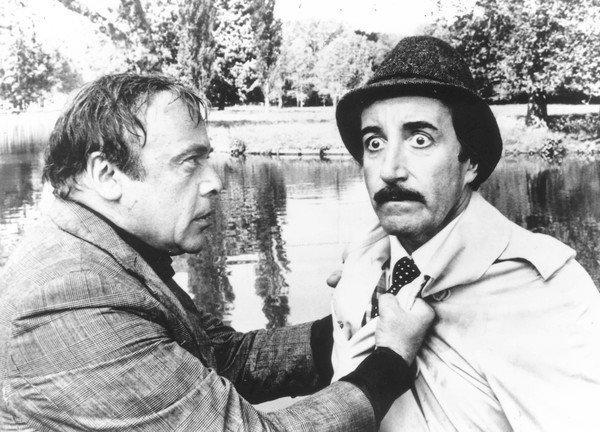I am having a CLOWN SUMMER. I’ve created a script full of funny characters for children I work with in an outdoor literacy program, I’m working on The Mysterious CHIRP — which is sweet and funny even though it’s also a sci-fi murder mystery podcast, and I am the Clown Consultant for and a clown performer in PAGLIACCI at the Glimmerglass Opera Festival!

Yes, you read that correctly, Pagliacci. Where the clown murders his wife. There’s comedy in there?
I was blown away too. The concept is the brainchild of the brilliant (and funny and kind) powerhouse director Brenna Corner.
The idea is that because the show is about a touring company — a commedia dell ‘arte company — we should have a pre-show where it’s a commedia piece that goes well, light and funny with young artists singing arias in between our ridiculous scenes.
Also, the performers in the pre-show are in the opera, as additional members of the performing troupe, so the audience feels the community of these players. There are a few moments in the opera with moments for the clowns that are sometimes passed over, but Ms. Corner has made full use of them, because even the characters expect that things will go as they always do. The characters feel as though even if things get a little out of hand, they’ll be able to pull it all back into place. Which, of course, is not what happens.
It’s working, and it creates a richer emotional palate for viewers and a greater compassion for the characters, in my opinion anyway. And I am the luckiest clown alive to get to be Brenna Corner’s sidekick.
Many folks have asked me about clowning and comedy, and why small differences cause something to be ok or gut-splittingly hilarious. So below, please find a short blog I wrote about that, citing a project with Middle School actors and the delicious math of comedy.
This original post appeared a few years ago, but remains true, as it has for hundreds of years — at least!
Before you read on, I want to add that the Maestro, the choreographer, the costume designer, set designer, lighting designer — they are all geniuses. This is an incredible, sumptuous show, and I highly recommend it!

How comedy works
“She enters, pauses, then turns and walks stage right, and Inspector Dreyfus leaps out. She stops. “Why didn’t that work?”
“You have to count to three. A full count. That was just a bit too long, and I think Dreyfus wasn’t sure when to jump out.”
“Yeah, I thought I was supposed to jump, but you were still there,” the boy adds.
“So, it goes step-think-go, walk, then the upstage-right one is the second set?” The girl playing Inspector Clouseau tilts her head, thinking.
“The first grab/miss should be just under three seconds, then three steps, the pause straighten turn go,” I reply.
“Because that’s a three, then there’s the middle one, with the lasso…which is the third one!”

“Exactly!”
“So,” chimes in Dreyfus, “I have to go twice as fast to get to the other opening for the pounce.”
“That would be awesome,” I nod.
They go at it again, the above jargon making complete sense to them, and this time, Dreyfus leaps just as Clouseau takes a step stage right, then a moment later, he leaps out again, just as Clouseau has turned toward center stage, then finally he and his lasso erupt out of the center stage … just as Clouseau miraculously had to tie her shoe, and another character is captured.
We are on the cusp of the perfect math, because comedy relies on math — the number of builds have to be odd, the beats have to be perfectly shorter or longer than the timing of real life, and the rate of acceleration or deceleration has to be impeccable. The length of pauses, of suspension, of delivery — there are often many comic options, but for each option, the pattern is rigid. It’s almost like revealing the flawless beauty of a gemstone — the math of the cut has to be exact.
They have practiced the routine several times now, sensing the places to speed up, noticing the places where it is almost right. “Holly, this part — what could we do to make it funnier?”
“Well, it’s the second section, so start the third beat sooner — cut a teensy bit off that second moment — and stre-e-etch it out to the last possible second, but don’t have the TOTAL time be any longer.”
“Just beat three,” nods Clouseau.
“Yes, and inhale as much as you can on that beat — it creates suspense, because you are suspending the relaxing breath. Then the exhale is the ‘GO.’”

Both youth (they are in middle school) nod and reply, “Ahhhhhh,” the combination worked, the light has clicked on. They happily run up to the stage, and begin it again. Unable to help themselves, the other cast members and assistants, all busy with their own tasks, turn to look … because this time it IS perfect. The actors are fast and furious, but the characters are relaxed and nonchalant, seemingly completely unaware of anything but the now, the mathematics of timing so perfect you can’t see it. And … the lasso! The group bursts into laughter and a smattering of applause, and the sweating, panting children look at each other and grin. They run up to me, out of breath and flushed with happiness.
“Holly, can we put in more gags?”